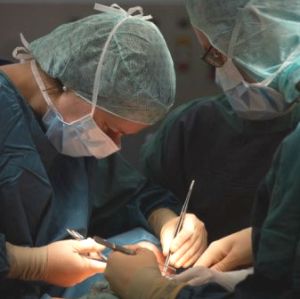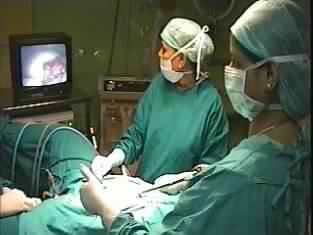Laparoscopy is a common operative process these days. What is laparoscopy? The process is a noninvasive method which is used for the examination of the inner regions of the pelvic cavity, abdomen and other areas of the body. Laparoscopy may be used for diagnosis as well as performance of keyhole surgical procedures. Instead of making a large opening and tearing the body, laparoscopy makes tiny incisions with the help of the laparoscope.
It is a slim instrument with an illuminated ending. The laparoscope captures fiber optic pictures and sends them into a monitor for the surgeon to observe the goings on inside.
 Laparoscopy as a diagnostic equipment can investigate the reasons of gynecological pain like tumors, cysts and endometrial lesions or for discovering ectopic pregnancies. The laparoscopy is also used to explore the reasons for abdominal tenderness or pain, scar tissues and problems which hinder fertility.
Laparoscopy as a diagnostic equipment can investigate the reasons of gynecological pain like tumors, cysts and endometrial lesions or for discovering ectopic pregnancies. The laparoscopy is also used to explore the reasons for abdominal tenderness or pain, scar tissues and problems which hinder fertility.
To know ‘what is laparoscopy’ better, it can be used like a surgical tool for performing hernia repair, eliminate ovarian and endometrial cysts, sterilize female patients or carry out partial hysterectomy. Laparoscopic surgeries are also taken up for eliminating the appendix and the gall bladder.
Evaluating what is laparoscopy
Performance of a laparoscopy requires 2 or 4 tiny incisions which measure less than 0.5 inches in length. An incision is put right below the navel while another is made underneath the bikini line. In case of an organ removal, further incisions may be necessary on both sides of the abdomen.
In the first incision, a needle is inserted in the abdomen to pump CO2 gas inside the abdominal walls far from the organs. This helps the surgeon obtain an improved view and more of space for handling the surgical tools and the laparoscope as required.
The surgeon uses small incisions instead of opening up the abdomen to reduce the recovery time and patient’s discomfort. It also helps diminish the effects of the surgical scars. If you want to understand ‘what is laparoscopy’, you should understand that this is very much an outpatient procedure and you can be back home within a day of completion of surgery.
Patients start feeling better within the course of a week. On the basis of the type of procedure undertaken, like time of elimination of the organ, complete recovery might require some weeks.
Although laparoscopy entails minimum risks due to its non invasive nature, some women may face an augmented risk. This group includes women who are obese, smoke, have pulmonary or cardiovascular diseases and those addicted to drugs. If you belong to any of these groups, it is best to discuss the matter with your health care provider.
Other possible complications may involve liver or bowel perforation. After doing thorough research on ‘what is laparoscopy’, you should go for the procedure. The recovery period is faster too. At times, patients may experience pains in the chest or shoulders as a result of the carbon dioxide which had been used to fill in the abdominal cavities. You may receive personalized instructions from your doctor for any side effects you might encounter.



